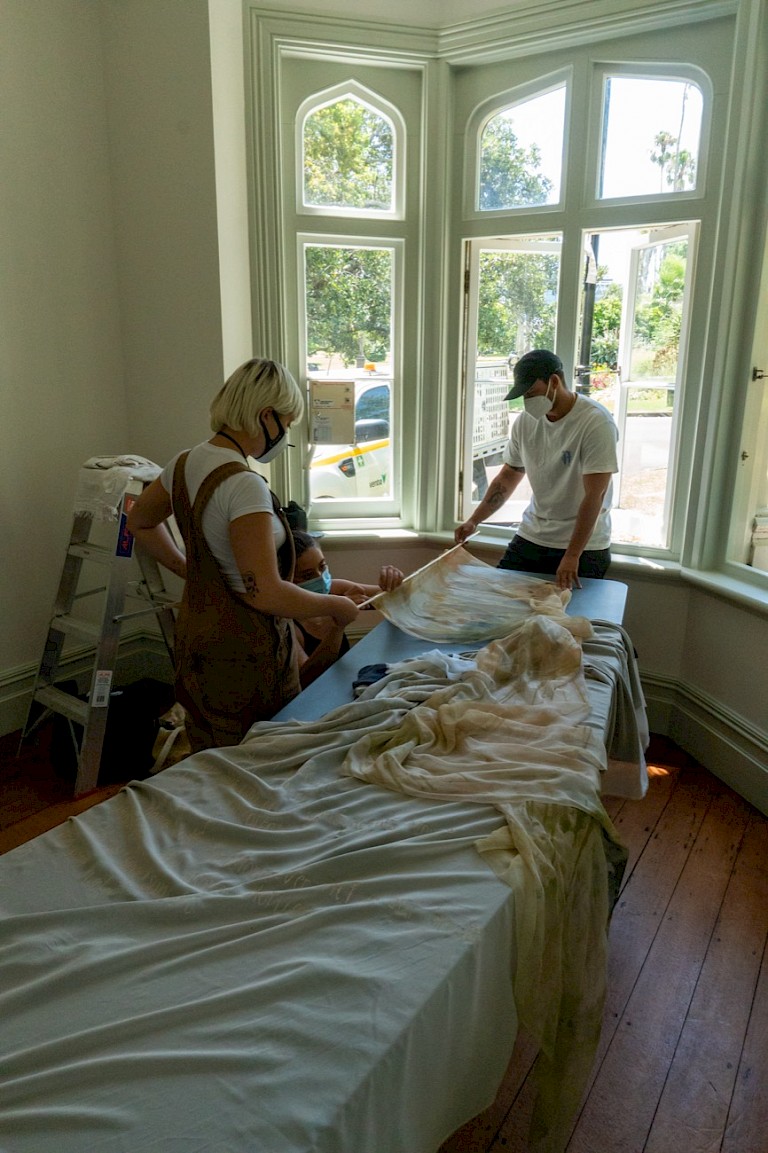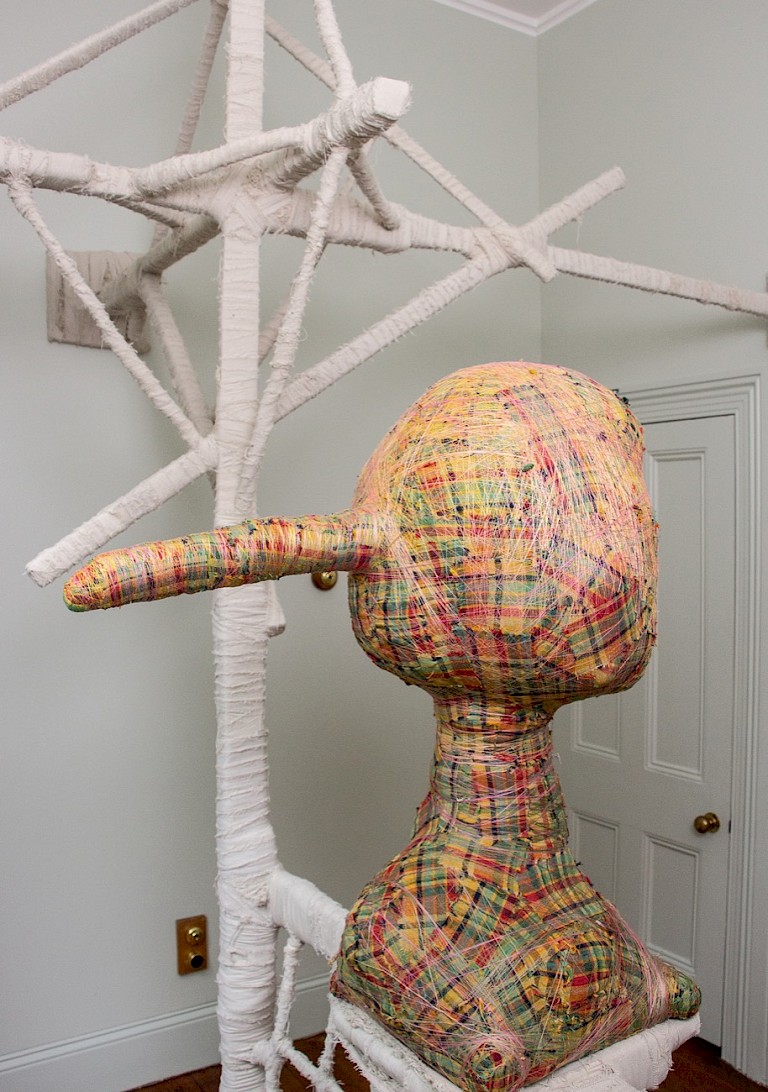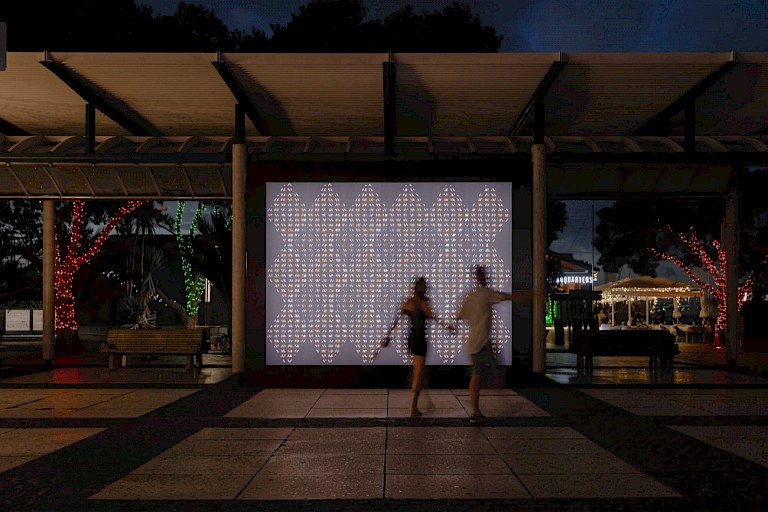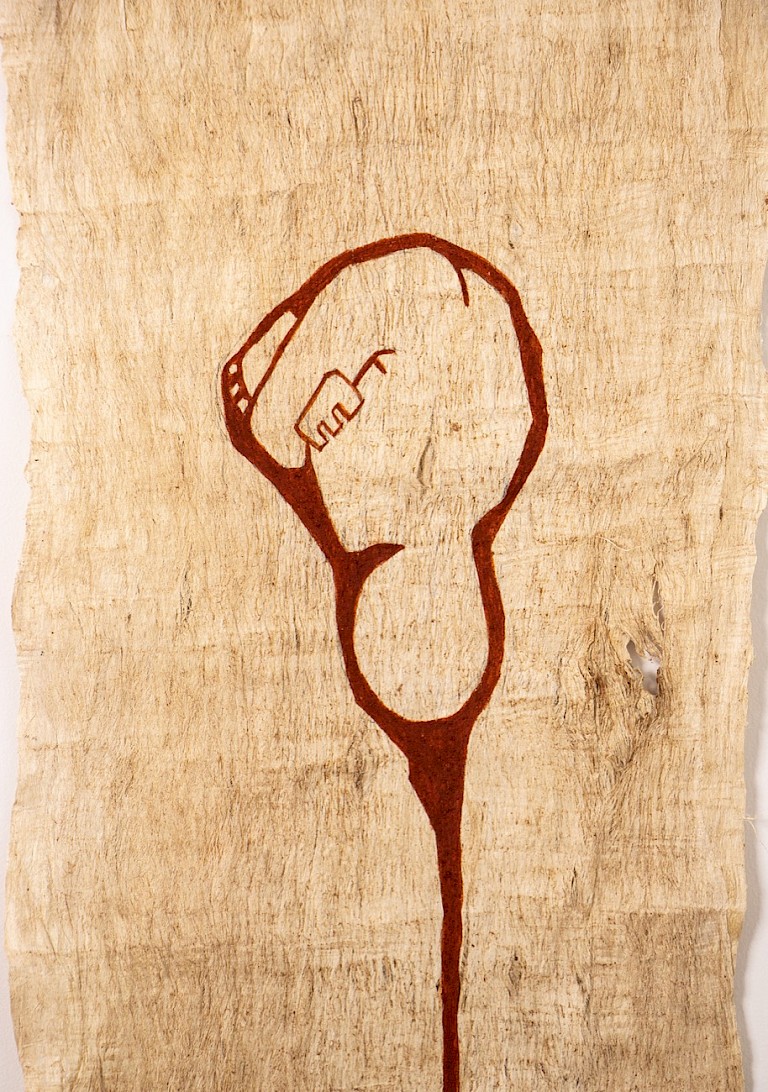



Te Tīmatanga brought together creatives who all identify as Takatāpui. This is a Māori term and its usage incorporates gay, lesbian, bisexual, or transgender identities within Māori and Pasifika culture. Referencing how these cultures enjoyed a multiplicity of gender identities that were accepted and firmly integrated into the mainstream before colonisation and imported Western values destroyed them, these artists help reclaim a diversity of suppressed gender identities through their practice. As a hybrid festival of digital delivery & in person events Te Tīmatanga developed public art and video works to create discreet & accessible opportunities for engagement for Takatāpui, Tangata Ira Rere, Tangata Ira Whiti, Tangata Ira Tangata and Tangata Whenua across the city of Tāmaki Makaurau/ Auckland.
In describing the origins of the public art event, director Hīmiora Bailey offered the following: “Te Tīmatanga, meaning ‘the beginning’ was named after the oriori “Ko Te Pū.” An oriori (lullaby) which is sung to Māori young throughout the gestational period & postpartum journey, to usher in good health, connect them to their iho matua (primordial ancestry), and affirm their status as Te Ira Tangata (descendants). As this was the first Takatāpui festival it felt important to acknowledge the infancy of the kaupapa (principal or policy) in the name, while pulling from taonga tuku iho (sacred knowledge systems) & acknowledging the role of our sexual characteristic, behaviors & gender identities within our tuakiritanga (indigenous identity) - grounded in Te Ira Tangata (Māori Epistemology).” The curatorial theme for the Public Art component commissioned a series of artistic responses to Dr Elizabeth Kerekere’s “He Whāriki Takatāpui - Part of the Whānau.” Artists Kahu Kutia, Hana Burgess, Liam Brown, Hariata Herekore, Huriana Kopeke Te Aho, Fern Ngatai, and Hāmiora Bailey responded to this prompt. Kerekere is an advocate and politician whose writing has been highly influential and important to this concept in Aotearoa-New Zealand. Te Tīmatanga set out to acknowledge Tangata Whenua, celebrate Takatāpui ,and prioritise Mātauranga Māori (Māori knowledge) from the onset of the Pride festival. From this guiding concept they created opportunities of community cohabitation, capacity building, and capability building for artists - also focusing on intergenerational connection. To ensure a sense of safety for Takatāpui, the curation of the festival drew on tuakana, teina models where emerging artists (the Teina) would respond to their elders (Tuakana). That way the festival would embody a process of mihimihi (reply and mutuality) where emerging Queer makers could connect to the legacy of artistry and lived experience from elders who had indeed birthed this opportunity, for a Takatāpui festival, from their very own resistance and resilience.For the first time the Auckland Pride Festival was seen as an environment for Kaupapa Māori. As Te Tīmatanga had a minimum fee of NZD $1500 minimum for artists, many were remunerated for the first time for artistic contributions. Partnering Teina artists with Tuakana and creating links with senior Māori academics and activists has had lasting impacts on younger aritsts careers. The Pride Festival had offered NZD$20,000 towards Te Tīmatanga so fundraising was paramount and used as an opportunity to build stronger relationships within the city, and affirm the role of the Organisation within Pride Month. Te Tīmatanga became the perfect opportunity for different precincts to focus on supporting Māori artists and focus on being Te Tiriti (The founding treaty between Māori and British settlers) partners as well as Rainbow allies.
Te Tīmatanga (TT) makes a stand to not only support artists, designers, and performers of a distinct community but to also readdress indigenous culture in public places. In this way, TT is at the forefront of a rebalancing of social and political norms in a post-colonial society. Both the concept behind and art works produced as part of this festival promote visibility and reintegrate concepts and identities that colonisation of the Pacific region tried to eliminate. Within the wider event concepts of recognition and connection were critical. To this end, and to amplify these aims, the organisation developed numerous and diverse partnerships, effective not only for funding and promoting the festival but also to form the bonds of private and public partnership that would support and care for the festival and its participants. These include in partnership with Creative New Zealand (arts council) TT hosted the artistic residency, partnership with Viaduct Harbour (a hospitality precinct located on Auckland's waterfront) artists considered the theme of ‘high tide’ and how they might honour its capacity to bring Māori closer together, and “elevate” collective practice & anamata (future). Creating and successfully presenting Te Tīmatanga strengthened relationships between Commercial Precincts, Māori Communities, and Rainbow Communities, successfully increasing a sense of safety for this vulnerable community in the Auckland CBD. Feedback from venues and partnerships was enthusiastic, responses include: “Britomart was delighted to play its part in Te Tīmatanga, and celebrate the contributions of Takatāpui Māori artists by featuring their work throughout the precinct. We loved the ambitious scale and strong statements each of the works made, and the way they collectively welcomed other Takatāpui Māori to this part of town. We also appreciated the way Te Tīmatanga activated a broad swathe of the central city, increasing the festival’s visibility and offering a rich, immersive experience across a wide area.” – Jeremy Hansen, Britomart. Samantha Saxton-Beer of a property investment group that supported the event remarked: “Since Viaduct Harbour inaugurated its first Pride celebration in February 2020, we knew that the conversation in our precinct needed to move into a deeper and more authentic korero. When Hāmiora approached us about the establishment of an indigenous kaupapa for Pride 2022, we could immediately recognise the values and intentions of the project aligning with our own. Looking back on the most recent two years of disrupted activation schedules, we wholeheartedly identify Te Tīmitanga as one of our most successful partnerships. The way this mahi (work) was able to transcend COVID settings speaks volumes to the quality of the project and its leadership. As Viaduct Harbour continues to support this vital mahi, we are incredibly grateful for the opportunity to be in the alumni of founding partners.”





